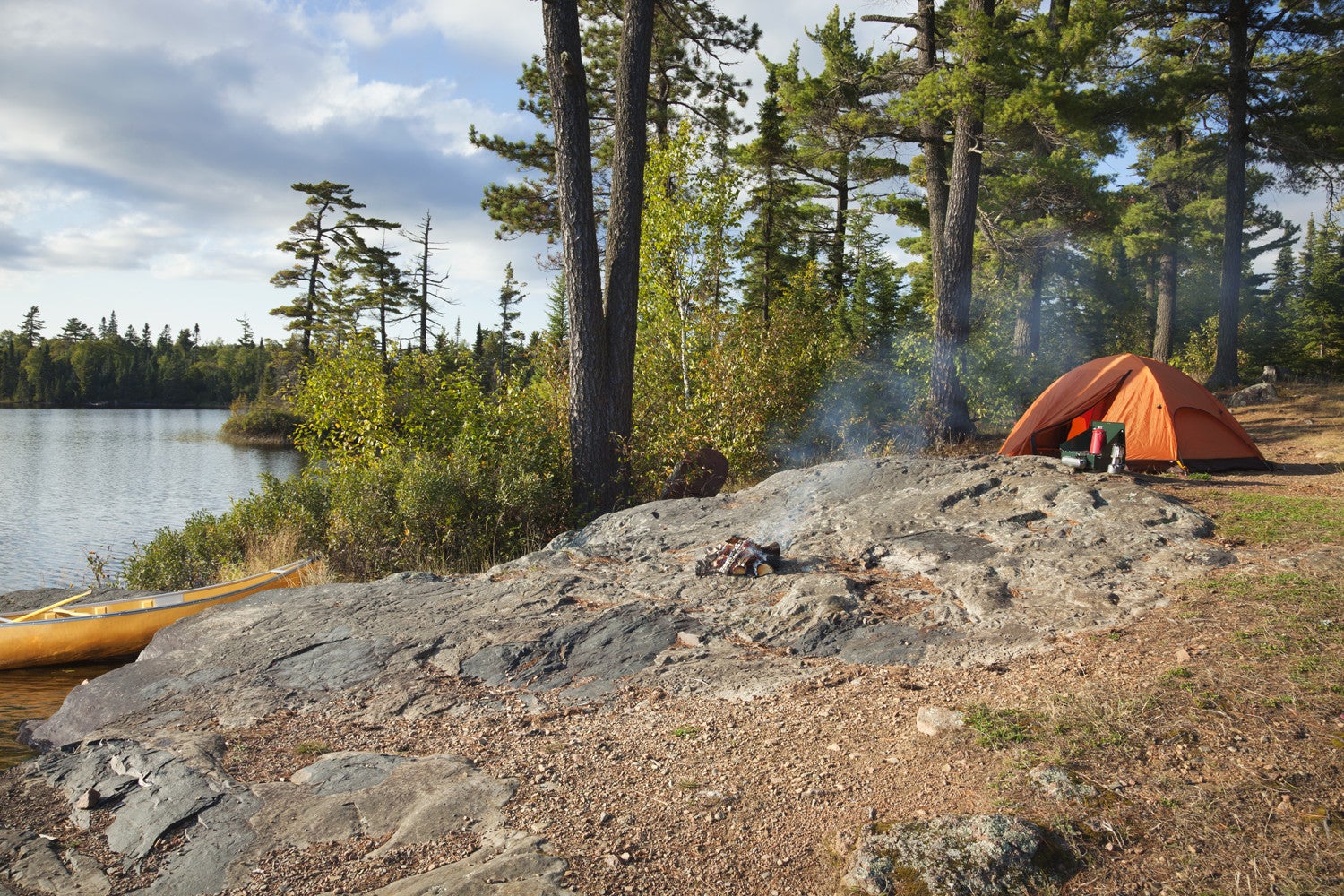How to Canoe Camp

'iStock.com'
With the mercury rising throughout the country, there’s no better way to keep cool and get a new view of your favorite places than by boat. Cruise for wildlife, cast a line, get an arm workout, and enjoy a sweet summertime float with these tips.
Map it out.
It might sound romantic just to hit the river and go where the current takes you. But just like any other trip, you’ll want to hash out your route ahead of time. Mark portages and campsites on your map, make any site reservations, and ensure you have any necessary permits. You can reasonably expect to travel around 10 miles a day on flat water and 12-15 on a gently flowing river.
Pack light.
The water might be carrying the load, but you’re still limited by what you can fit in your canoe. Keep your packing list short, make sure all your luggage is easy to carry in case of unexpected portages, and do a shakedown well before shove-off time to be sure it will all squeeze into the canoe. Pack clothes and sleeping gear in dry bags or packs lined with plastic bags. Keep kitchen gear and food in waterproof containers. For a classic (though heavy) solution, consider using a wanigan, a wooden box custom-built to fit inside a canoe, complete with a leather tump line to fasten around your forehead when portaging.
Load carefully.
As with backpacking, put the heaviest items where they’ll least affect your balance: in the center and bottom. Layer with lighter gear up and toward the ends to keep the canoe balanced and trimmed. Avoid putting too much weight in the fore and aft (Trust us—this is one situation where it’s not cool to pop a wheelie.) Keep gear below the gunwales—the edges around the side—so they don’t catch wind. Quick-release knots, cam straps, or bungees will secure gear while keeping it easy to remove for portages and camp. Place items you want during the paddle (water, sunscreen, maps, snacks, bug repellant) within arm’s reach.
Go fishing.
Nothing closes out the day like reeling in a walleye or pike to fry over a campfire. (Bring enough food to get you by just in case you miss the big one.) Try a clamp-on rod holder to affix your rod to the gunwale for casting on the water, and make sure to secure your fishing licenses ahead of time.
Stay safe.
Wear a properly fitting PFD whenever you’re on the water. Keep maps, compass, route information, camping permits, and other paperwork handy and dry by storing it in a zip-top bag and attaching it below your seat. Secure a spare paddle within easy reach using Velcro straps or elastic. If you’re not used to paddling, consider using bike gloves to prevent blisters and knee pads to ward off bruises if you have to kneel. Last but not least, make sure your canoe has a bowline for hauling and anchoring.
Capsized? Don’t panic.
If you’re near shore, tuck paddles under the seats and swim your canoe to the bank. Too far? Swim under your canoe, push the floor up, and pull down on the gunwhales to flip. Take turns stabilizing the canoe and climbing back in, then paddle to shore to dump remaining water.
If there’s another canoe nearby, bring the center of the upright canoe perpendicular to the end of the capsized one. Lift the end of the capsized canoe onto the upright’s gunwale while a swimmer pushes down on the far end of the capsized boat. Pull the overturned canoe across both gunwales until it’s centered and out of the water. Roll it over, turn it parallel to the upright canoe, and place it back in the water. Hold the gunwales while swimmers climb in.